NOTE: all images are clickable for urls or fullsize images !... What is GL4ES ? ...GL4ES is an OpenGL 2.x/1.5 to GL ES 2.0/1.1 translation library, with support for Pandora, ODroid, OrangePI, CHIP, Raspberry PI, Android and AmigaOS4. Writen by Sebastien "ptitSeb" Chevalier.

For AmigaOS4 translation done via ogles2.library (written by Daniel "Daytona" Muessener) and which in turn works on top of warp3dnova.library (written by Hans de Ruiter).
With GL4ES we have not only OpenGL1.x as with MiniGL, but OpenGL 1.x, OpenGL2.x, and even some limited OpenGL3.x support.


Q: How it works?
A: GL4ES emulate fixed-pipeline via auto-generated GLSL shaders and send them to ogles2 which in turn parse & patch them, convert to SPIRV format and send to warp3dnova for compile and execute.
Q: Are shaders that come with OpenGL apps works too?
A: Yes. They also go through gl4es for adding little bits, and then the same send to ogles2/warp3dnova for compile and execute.
Q: Why not made full OpenGL? Why just not port MESA over Warp3DNova?
A: Because it's harder and there weren't thousands of developers willing to do so. Only Daniel was able to take the task, and to make something in the real time frame it was chosen to go the OpenGL ES route. But anyone feels free to made MESA port over Warp3DNova, of course.
Q: Is it faster than MiniGL over old Warp3D? Is it better?
A: It is faster in most cases a lot. In some cases where old GL_BEGIN/GL_END route used, speed can be the same, just without MiniGL bugs. But in other cases it much faster. As GL4ES works over opengles2 & Warp3DNova, we hasve hardware TCL, VBO and all stuff.
Q: Why some things are fast, but other ones are not _THAT_ fast as we hope ?
A: Because currently, we don't have DMA/GART implemented in graphics drivers.
... Intro ...As of now, it's one year passed since the first GL4ES releases for AmigaOS4 and just 3 months since the first release of GL4ES SDK. While work on GL4ES was started 3 years ago as a fork of
glshim project, AmigaOS4 at that time wasn't taken into account. Only 1.5 years ago I made first attempts to made an AmigaOS4 port and with a big help of GL4ES developer (ptitSeb) and our developers like Daniel, Capehill, and Hans that was done. Through to note, that all actual code-work on amigaos4 specific parts in gl4es still done by ptitSeb, and I play there the only role of tester, bug-hunter, and helper with pure amigaos4 related parts in some places.
It is also 3 years ago first releases of Warp3DNova and ogles2.library out, and because of work on GL4ES, there were a lot of bugs fixed and new features added in both Warp3DNova and ogles2.library. Daniel does a lot of hard work on optimization of ogles2.library in all possible cases and today it gives pretty decent results. Hans does fix lots of bugs lately in Warp3DNova as well but probably lacking DMA still shows issues and we do not have the speed we all can hope in some cases. It's still all very much better than old MiniGL and Warp3D combo, but in some cases non-having DMA/GART is a bottleneck.
Now, before we go to releases, there is a list of components you need to update firstly (which you do through Enhancer's Updater).
1). Radeon HD card with RadeonHD 3.7 driver as a minimum.
Polaris card is not recommended due to low FPS[/b] (see explaining further).
2). ogles2.library v2.11
3). Warp3DNova.library v1.68
4). Fast enough AmigaONE
For first, in RadeonHD 3.7 there was a very important bug fix when things simply crashes on X5000 and Tabor when you pass 256mb barrier of filled GPU memory (some of you may remember issues with RCTW Reboorn crashes on X5000 with hi-details, or Jedi Outcast, so that it: on high details, games want more than 256mb of GPU video memory => crash). Hans fixes it, and so you must update if you on X5000 or on Tabor.
Also as i point out you should have RadeonHD,
NOT Polaris card[/b] ! I mean for real. The issue there that most of the games and apps will give you much worse result in speed in comparison with RadeonHD cards. The only exception is "Spencer" game, which gives better results on Polaris card, but all other stuff like all gl4es apps, AmiCraft (non-gl4es based), some test cases, all of this give worse results. For example, if with RadeonHD you have somewhere 60fps, then with Radeon RX you will have just about 40. The reason is unknown, but we think its because of no DMA implemented, and by default power management expects DMA to be there, and so didn't rise resources up. But all that to be seen if that the case, but for the time being
_NO_ Polaris[/b] recommended if you want to have fun with those games with good FPS. Use RadeonHD card and RadeonHD 3.7 drivers as a minimum. When the time will come then Polaris also can be used for those games, but not now.
Also, you need to update ogles2.library and warp3dnova.library to the versions I point above (2.11 for ogles2 and 1.68 for warp3dnova), as there was some important bugs fixed and features added, without which games will work bad, or wrong, or slow, or not works at all. So, update!
... Release time ...Now, after a wall of text, let's start:
1). Irrlicht Engine 1.8.4 
Back in past many of us always asking for some "demo/game engine" for modern Amigas with OpenGL support and stuff, which very well tested, documented and feature-rich. There is :
Irrlicht Engine.
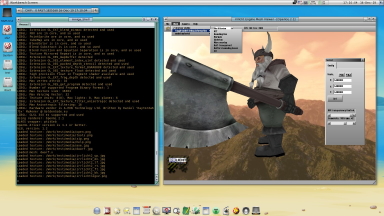
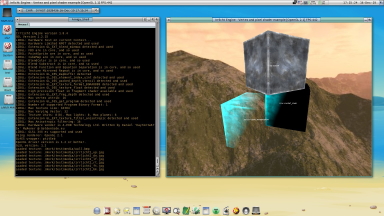
The Irrlicht Engine is an open-source realtime 3D engine written in C++. It is cross-platform, using D3D (for win32), OpenGL (for others) and its own software renderers. It is a stable library which has been worked on for nearly 20 years. Irrlicht got a huge community and is used by hobbyists and professional companies alike. The engine is well documented. You can find enhancements for it all over the web, like alternative terrain renderers, portal renderers, exporters, world layers, tutorials, editors, language bindings and so on. And best of all: It's completely free.
For the years there were books written for, for example, those ones (press on the image to go on amazon page):
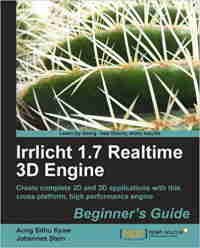
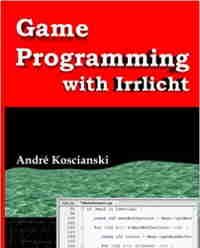
The engine also big-endian aware for now (it was originally, and in last year I with help from all developers (and Irrlicht ones, and our ones), fix almost all remaining endian issues).
The original release of 1.8.4 was in July 2016, and work on 1.9.0 is ongoing right now with a lot of new features added and bugs fixed. Once there will be 1.9.0 out, the AmigaOS4 version will come out as well.
Through, 1.8.4 already very enough for making the games, and as examples of its usage there today 3 new games based on it.
AmigaOS4 port is on Github here:
https://github.com/kas1e/Irrlicht/ and if you find any amigaos4 specific issues plz report them on issues page here:
https://github.com/kas1e/Irrlicht/issues (and yes, odyssey didn't work with Github anymore, so you had to use Linux or win32 for Github).
It is released in 2 variants (which you can grab from
os4depot as everything else):
irrlicht-1.8.4.lha - full archive, with all the sources, includes, documentation, precompiled binaries, link library and media files. Size of archive 115mb.
irrlicht-1.8.4_minimal.lha - that just includes and newlib's link library which is enough to start code over it. Size of archive 4mb.
The engine is fully tested to be compiled and on AmigaOS4 natively and over cross-compiler (see the readme_amigaos4.txt inside). As a basis for makefile(s), I use the latest GCC 8.3.0 from adtools, so if you on something older, you will have needs to adjust makefiles a bit (by removing -athread=native)
For examples check 'bin/AmigaOS4/' directory, because the directory 'examples' is for source codes. Every example on running asks you what rendering backed you want, so for AmigaOS4, it can be: OpenGL (via GL4ES/ogles2/warp3dnova in our case), Burning's Software Renderer (very accurate) and Software Renderer (not very accurate, but faster).To close example press alt+f4, or press on the close gadget as usual.
NOTE!:[/b] If you wish to program over Irrlicht Engine, you also should be sure that you have GL4ES SDK installed.
Compiling over MiniGL with some hacks possible, but it gives so bad results in compare, as well as gives lots of visual and crashing bugs. But for sake of tests, I was able to make some hacked MiniGL version just to show the difference (at least in those examples which runs somehow and before they crash:) ) in compare with gl4es one. See that pretty graph (as with all other images there, click on it for full size):
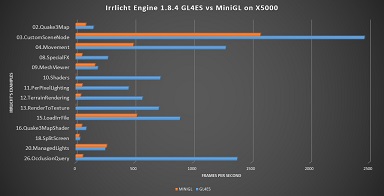
And as usual, a video:
 Youtube video of Irrlicht Engine in action on AmigaOS4, 1920x1080 full HD 2). SuperTuxKart 0.8.1
Youtube video of Irrlicht Engine in action on AmigaOS4, 1920x1080 full HD 2). SuperTuxKart 0.8.1 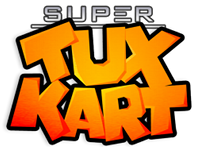
One of the first Irrlicht based games I was able to deal with is SuperTuxKart 0.8.1:
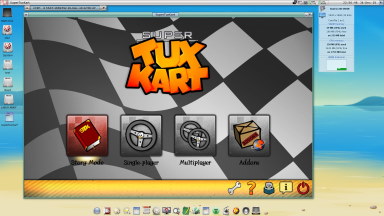
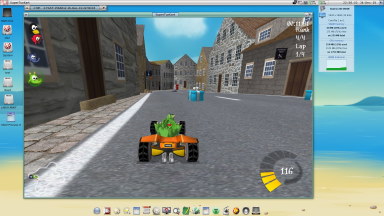
One may ask why 0.8.1 and not the very latest one? There are 2 reasons:
1). That was the last version where they use the public version of Irrlicht, and since 0.9 they move to their own engine, porting of which means porting another engine just for one game (and I am not sure, but probably they also dropping big-endian support since that too).
2). Their latest versions pretty slow even on the modern PCs (tested it myself of course), while visually they not _that_ better than 0.8.1 as one may expect for such an fps drop.
Surprisingly the hardest part there was to deal with amigaos4 paths (full of them, in all possible places, in different ways of usage). As well a game does use heavy Ftell()/Fseek(), which found some problems in Newlib, which was fixed in and will be available in the next os4 update, but in the meanwhile, I add some workaround code, so loading will be fast and on public Newlib.
NOTE! One sad remark though: Don't enable "use frame buffer object" in options, or you will then crash with "invalid FBO attachment" when you choose a car. The issue is known, and we still trying to understand where it comes. Visually, without that enabled, it only gives you a little bit of slowness when you choose a car (rotation of cars will be not very fluid), but in other parts and in actual gameplay you will not notice that. Once we fix a bug I will make another release.
On x5000 with RadeonHD and latest ogles2/warp3dnova, you can expect up to 60FPS on some levels, while in other ones you may drop to just 15-20. Most of the time you will be around 30-40.
A game needs about 350 MB of RAM, 350 MB of GPU memory, 40 MB of system's VRAM memory and 350 MB of HDD space.
You can see it on video:
 Youtube video of SuperTuxKart 0.8.1 in action on AmigaOS4, 1920x1080 full HD
Youtube video of SuperTuxKart 0.8.1 in action on AmigaOS4, 1920x1080 full HD